While the ear is often considered “self-cleaning”, excessive buildup of earwax can lead to discomfort, hearing loss, tinnitus, infections, and problems with hearing aids, making removal necessary.
Using improper tools or techniques can pose risks of serious injury to the delicate ear canal or eardrum. For the safest and most effective earwax removal, it’s crucial to seek assistance from a trained healthcare professional who can thoroughly examine your ears and remove the wax with precision and care, like us!

What to expect during your appointment:
After taking your ear health history, your ear canals will be examined using an otoscope to assess the amount, consistency and depth of the problematic earwax. If removal of the wax is considered safe and appropriate, we will use one (or a combination) of the techniques listed below. For stubborn wax, we may administer softening drops during the procedure, or (rarely) ask you to use them for a few days and arrange a follow-up appointment to complete the removal. It is not necessary to use softening drops before your first appointment.
Removal will be as gentle, precise and thorough as possible. It is not usually painful, but it can be a bit noisy or unpleasant. You may choose to take a break or stop the procedure at any time.

Microsuction
Microsuction is considered one of the safest and most effective methods for earwax removal. It is a dry method performed using a fine-tipped vacuum, while maintaining full visualisation of the ear canal through a head-worn microscope. This allows for precise and thorough wax removal with minimal canal contact, making it suitable for removing wax in the deeper, sensitive areas of the ear canal. Microsuction can also be used on people who have an outer ear infection (otitis externa) to remove debris and allow better penetration of prescribed ear drops.

Curettage
Curettage is a dry method of earwax removal that involves using a small, curved tool called a curette to scoop wax out of your ear canal. Good lighting and visualisation of the ear canal and eardrum is essential throughout this procedure to prevent injury to the delicate structures of the ear, so do not try this at home (it’s tempting, we know!). Our Audiologist is highly skilled in performing this procedure and will ensure that you are comfortable throughout the process.

Irrigation
Irrigation involves flushing the ear canal with warm water using a syringe or spray device. When performed correctly this method is generally safe and effective, but it isn’t always suitable – particularly in people who have a damaged eardrum or a middle ear infection.
Please note:
If we identify a medical condition or feel that continuing with the procedure is contraindicated, we reserve the right not to proceed and refer you to your GP. Similarly, if there is no earwax evident but you are experiencing symptoms of pain, blockage, hearing loss or other symptoms, we will advise you of an appropriate course of action.
While we make every effort to deliver the desired outcome of clear, comfortable ears, if the procedure does not go ahead or is unsuccessful in the first attempt, there will still be a charge for the appointment time used.
FAQs
Earwax, or cerumen, is a natural substance produced in the outer 1/3 of the ear canal. It is composed of secretions from sebaceous (oil) glands, ceruminous glands (specialised sweat glands), and dead skin cells. This combination results in a substance that can vary in consistency from soft and yellow, to brown and hard, depending on the composition and the individuals biology.
Earwax is not ‘dirty’ or ‘unhygienic’. It serves several important functions in the ear:
- Protection: Earwax traps dust, dirt, dead skin cells and other foreign particles, preventing them from reaching and potentially damaging the eardrum. As the skin of the ear canal grows out towards the ear canal opening, the wax carries this debris out of the ear.
- Lubrication: It keeps the skin of the ear canal moist and prevents it from becoming dry and itchy.
- Antimicrobial Properties: Earwax has antibacterial and antifungal properties, helping to reduce the risk of infections in the ear canal.
The skin of the ear grows outward from the centre of the eardum towards the ear canal opening. Earwax usually moves along this natural “conveyor belt” to the opening of the ear, where it either falls out or can be easily removed during regular washing.
Any practice that disrupts the natural migration of earwax out of the ear canal can cause earwax to accumulate, for example, regular use of earplugs, hearing aids, or cotton buds. But it is also true that some people are predisposed to earwax build up or ear canal occlusion due to overproduction of wax, dry skin conditions, frequent ear infections, narrow, hairy, or tortuous ear canals, or production of drier wax as we get older.
Earwax removal shouldn’t hurt, but the deeper part of the ear canal can be highly sensitive. The methods of wax removal that we use are gentle and precise, avoiding direct contact with the canal wall, but if the earwax build up is deep in the ear, you may feel some discomfort during the procedure as it is lifted away from the canal wall. If you do experience pain and wish to stop the procedure, you may do so at any time.
You can remove earwax at home, but it’s important to do so safely to avoid damaging your ears. If you experience pain, discomfort, or persistent earwax buildup despite home treatment, consult a healthcare professional. They can safely remove the earwax and check for any underlying issues.
Recommended methods include:
- Cerumenolytic Ear Drops: Over-the-counter wax removal ear drops, such as those containing hydrogen peroxide, carbamide peroxide, or saline, can help to soften and break up earwax, making it easier to remove or come out of its own accord. Follow the instructions on the package. Some of these products can cause irritation if used for more than 1 week.
- Olive Oil: Olive oil is a natural lubricant which gently softens the wax and helps it to migrate out of the ear. Tilt your head to the side and place 2-3 drops in the affected ear at room temperature. Gently massage around the outside of the ear, then allow them to sit for a few minutes before draining and dabbing the excess with a tissue. You can continue for any length of time, but 2-3 weeks is usually enough.
The ear canal and eardrum are extremely delicate, and when attempting DIY earwax removal you are usually going in blind. Several methods of earwax removal that are widely accessible are not recommended due to risk of significant harm and ineffectiveness. Some common examples include:
- Cotton Buds (Q-tips): These can push earwax further into the ear canal, potentially causing impaction or damaging the eardrum.
- Sharp Objects: This one is obvious, but using hairpins, keys, paperclips, or other sharp objects can easily cause abrasions (risk of bleeding and infection), perforations, and other serious injuries to the ear canal and eardrum.
- Ear Candles: Ear candling involves placing a hollow candle in the ear canal and lighting it. Proponents of this practice claim that the heat creates a vacuum that draws out earwax, however, studies have shown that it does not create a vacuum effect nor remove wax effectively. The practice also poses significant safety risks, including burns to the face, hair, or ears from hot wax or fire, and ear injuries, including punctured eardrums and ear canal obstruction.
- Irrigation: While gentle irrigation with water can be effective when done by a professional, irrigation at high-pressure can damage the eardrum, and using water that is too hot or too cold can potentially cause vertigo by stimulating the inner ear.
To prevent earwax buildup, you can take several simple steps:
Avoid inserting objects into your ears: Refrain from using cotton buds, fingers, or any other objects to clean your ears, as this can push wax deeper into the ear canal and lead to buildup.
Use earplugs: If you are working in dusty or dirty environments, using earplugs can prevent it from entering your ear canals and becoming trapped in the wax.
Use olive oil: Using olive oil drops or sprays 2-3 times per week softens earwax naturally, promoting migration out of the ear. For those with itchy, irritated ear canals, olive oil can also help to moisturise, protect and soothe the inflamed skin. Reducing inflammation reduces skin cell turnover, which also helps to prevent wax build up.
Schedule regular wax checks: We can arrange periodic wax check appointments with you to keep your earwax under control and prevent build up before it becomes problematic.
Some things are best left to professionals...
Contact us for an earwax removal appointment today.



